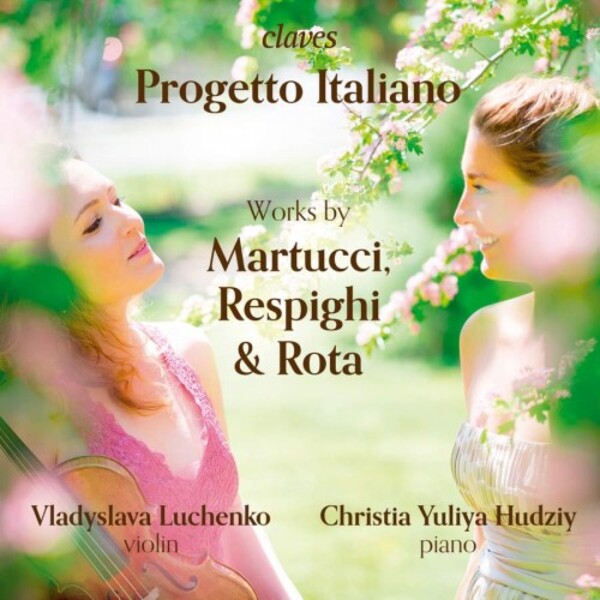
Progetto Italiano: Works by Martucci, Respighi & Rota
£13.25
Usually available for despatch within 3-5 working days
Despatch Information
This despatch estimate is based on information from both our own stock and the UK supplier's stock.
If ordering multiple items, we will aim to send everything together so the longest despatch estimate will apply to the complete order.
If you would rather receive certain items more quickly, please place them on a separate order.
If any unexpected delays occur, we will keep you informed of progress via email and not allow other items on the order to be held up.
If you would prefer to receive everything together regardless of any delay, please let us know via email.
Pre-orders will be despatched as close as possible to the release date.
Label: Claves
Cat No: CD1910
Format: CD
Number of Discs: 1
Genre: Chamber
Release Date: 18th October 2019
Contents
Works
Pezzi (3), op.67Pieces (6) for violin and piano, P31
Violin Sonata in B minor, P110
Improvviso in D minor for violin and piano
Artists
Vladyslava Luchenko (violin)Christia Yuliya Hudziy (piano)
Works
Pezzi (3), op.67Pieces (6) for violin and piano, P31
Violin Sonata in B minor, P110
Improvviso in D minor for violin and piano
Artists
Vladyslava Luchenko (violin)Christia Yuliya Hudziy (piano)
About
He studied at the Naples Conservatory, where he soon became professor of piano (1880). He later became head of the Bologna Liceo Musicale (1886) and finished his career as director of the Naples Conservatory (1902). A celebrated pianist, he quickly devoted himself to conducting and composition. A fervent admirer of German music, his broad tastes encompassing Schumann, Brahms, and Wagner (whom he introduced to Italy), he was highly respected during his lifetime. However, the trend towards Italian music taken after 1918 and the developments led by Casella, Pizzetti and Malipiero left little room for the memory of a pioneer influenced by German Romantic culture.
The bulk of the Martucci’s oeuvre, rehabilitated by recordings but still not widely known, remains to be discovered by a wider audience. His Three Pieces for Violin and Piano, op.67 (1887), are little ‘post-Schumannian’ jewels. Andantino (E major), with its dreamy mood, presents a subtle variant on the traditional three-part structure, where the central section drifts away from the first section and then returns to it in a varied form.
The second piece, Allegretto in G sharp minor, is darker in tone; also in three parts, with a discreet reminder of the main theme of Andantino, it has a brilliant central section, closing with a recitative leading to a reprise of the first section. The third piece, Allegro passionato, more cheerful, looks to Neapolitan folklore and recalls something of the atmosphere of certain passages of Liszt or Chopin.
Error on this page? Let us know here
Need more information on this product? Click here